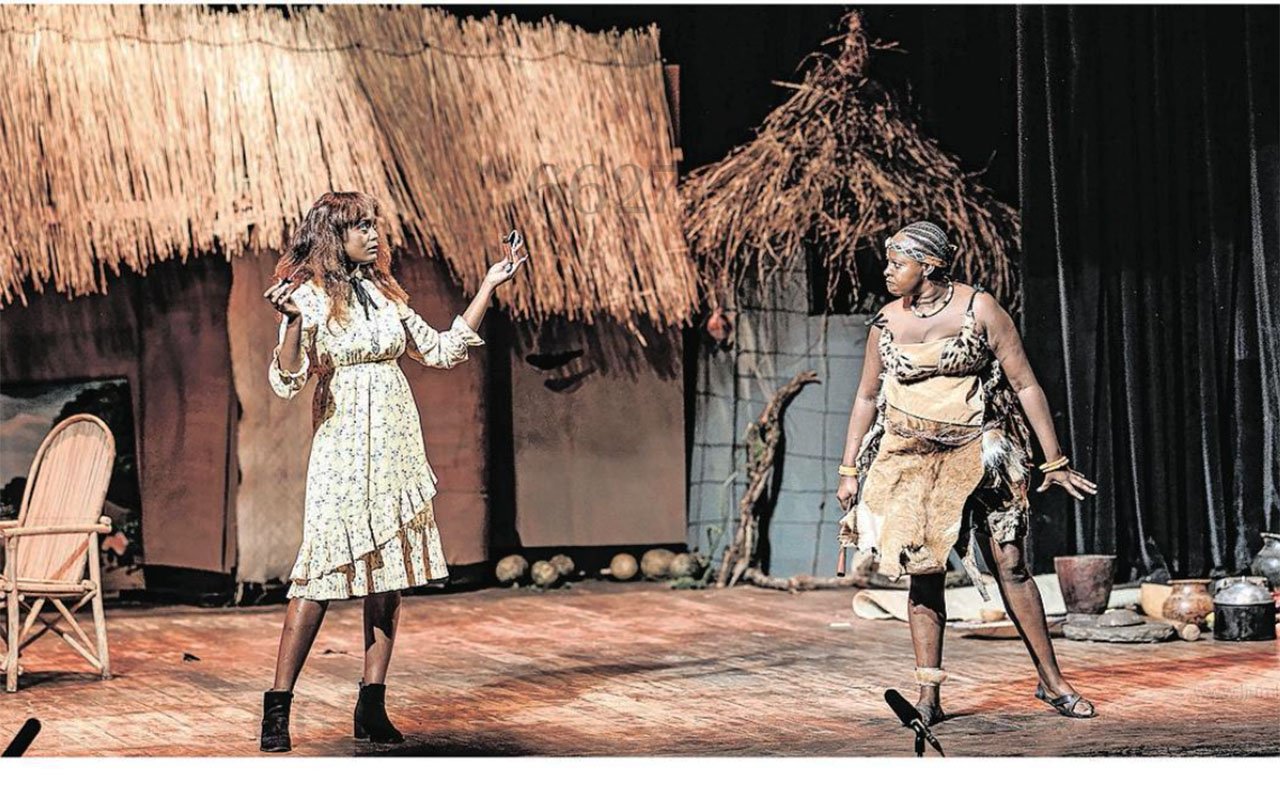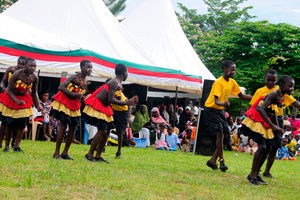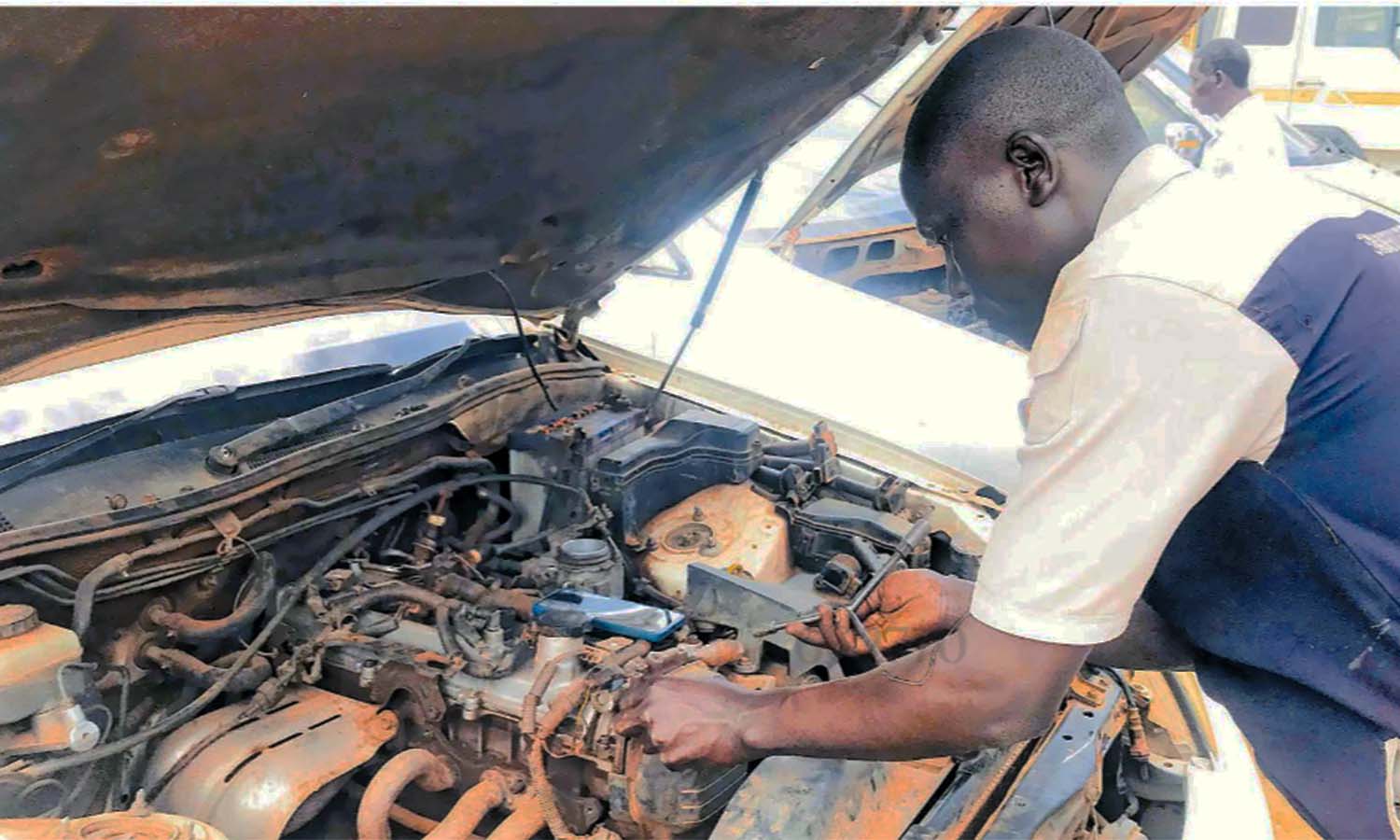
Destiny Chaiga (left) acts as Clementine and Sharon Atuhaire as Lawino in the musical production Echoes of Lawino at the National Theatre in Kampala. Photo/File
In recent years, Uganda's cultural sector has marked itself out as an essential contributor to national identity, economic growth, and social cohesion. However, despite its vast potential, public funding for culture remains limited, with the sector receiving less than 0.05 percent of the National Budget.
A March and April baseline study and stakeholder mapping made possible by the Connect for Culture Africa (CFCA), a regional initiative focused on transforming Africa’s arts, culture, and heritage through advocacy, set out to examine the landscape of public investment in Uganda's culture sector.
It focused on identifying existing gaps and recommending steps for improvement. The CFCA aims to increase public investment to at least one percent of the National Budget by 2030.
Guided by the United Nations Educational, Scientific and Cultural Organisation (Unesco) Framework for Culture Statistics, the study covered a broad spectrum, including performing arts, visual arts, cultural heritage, media, and creative services. Its findings lay a foundation for rethinking public investment, advocating for strategic partnerships, and pushing for increased governmental commitment to the sector.
State of public funding
Uganda's culture sector has persistently seen minimal public funding, with budget allocations below one percent of the National Budget. For instance, in 2021/2022 and 2022/2023 fiscal years, the sector received only 0.0012 percent, which rose slightly to 0.018 percent in 2023/2024.
Although this increase appears promising, projections for 2024/2025 show a potential decline to 0.016 percent. The Department of Culture’s 2023/2024 budget was approximately Shs9.069 billion—only 0.016 percent of the Gender ministry’s total allocation.
Charles Batambuze, the vice chairman of the National Culture Forum, cautions artists against celebrating perceived increases, noting that these incremental changes primarily benefited traditional leaders rather than the broader creative industry. This funding level, he adds, barely scratches the surface of the needs within Uganda's vast cultural landscape, which includes traditional dance, film, music, theatre, and a growing community of visual and literary artists.
Similarly, funding allocated by local governments for cultural initiatives has remained stagnant, peaking at 0.4 percent in 2019/2020. The low prioritisation of the cultural sector in the budgeting process reflects a gap in recognition of its potential as a driver of economic and social development. Without adequate investment, crucial aspects of the sector—like infrastructure development, capacity building, and preserving cultural heritage—struggle to thrive.
Room for improvement
On Monday, this report was presented to the government through Juliana Naumo Akuryo, the commissioner for Culture Affairs at the Gender ministry, which oversees culture. Akuryo acknowledged the need for improvement, citing slight progress in financing.
“This report will help us complete the process of submitting our project to the Ministry of Finance, and thereafter the financing will increase,” she said, appreciating the team that developed the baseline report.
Akuryo also emphasised the importance of unity, urging ministries, departments, and agencies (MDAs), civil society organisations (CSOs), and the private sector to work collaboratively.
“We can’t do it alone and you can’t do it alone. We should not work in silos.”
A key issue identified by the study is the absence of a dedicated budget line for culture within Uganda's public investment framework. Without specific classification in the National Budget, funds intended for the cultural and creative sectors are scattered across various institutions, making it difficult to coordinate and track resource allocation effectively. This lack of centralised funding not only hampers sector planning and development but also weakens the advocacy efforts needed to secure greater financial support.
Batambuze clarifies that the core issue lies in the persistent exclusion of cultural industries from national budgets, an issue compounded by the misalignment between Creative and Cultural Industries (CCI) activities outlined in the third National Development Plan (NDP III) and the sector’s broader goals. As a result, government funding has not been directed toward these priorities. Consequently, even with a designated budget line, the creative industries have remained, and would likely continue to remain, a “non-funded priority,” perpetuating a cycle of insufficient financial support.
Another significant challenge is the scarcity of comprehensive data on the cultural sector's economic impact. Existing statistics are outdated or limited, leaving gaps in understanding the sector's contributions to employment, GDP, and community wellbeing. Without robust data, policymakers find it challenging to justify increased investment, despite the sector's untapped potential for growth.
The report highlights inadequate infrastructure, limited funding, and unprotected markets that restrict sector growth and professionalism. Intellectual property protections are weak, leaving artists vulnerable to exploitation, which reduces incentives for creativity and innovation. The sector's challenges are exacerbated by a lack of inter-agency collaboration among government entities, CSOs, and private stakeholders. This fragmentation leads to piecemeal advocacy efforts, reducing the effectiveness of campaigns for better investment.
Low awareness among policymakers about the cultural sector's economic value further limits prioritisation within the budget. Ultimately, these obstacles underscore a need for structured, coordinated efforts to raise public awareness and position culture as an essential component of Uganda's national development agenda.
Stakeholder Insights
Julius Bwanika, a filmmaker and core member of the CFCA working group in Uganda, explained that the study aimed to assess the current funding landscape and map critical stakeholders to advocate for cultural development more effectively. He emphasised the need to bring stakeholders together to strengthen investment and advocacy for the sector.
The study mapped a diverse array of stakeholders integral to the development of Uganda’s cultural sector. Participants included government agencies such as the Gender ministry, the Uganda Communications Commission, and local government departments, as well as CSOs like the Cross-Cultural Foundation of Uganda. Local creative practitioners, from artists to cultural entrepreneurs, also play a crucial role in shaping and promoting cultural initiatives.
However, despite this diversity, stakeholder interactions are often fragmented, with limited formal partnerships driving cohesive growth. While central and local government bodies are critical for policy formulation, budget allocation, and sector regulation, CSOs and the private sector often lead advocacy and community engagement efforts. However, coordination between these groups remains limited, reducing the sector's ability to present a unified voice when advocating for increased investments.
Recommendations
Based on the study’s findings, several recommendations have been proposed to enhance public investment in Uganda’s culture sector. One of the most significant suggestions is establishing a minimum allocation of one percent of the National Budget for cultural development, as advocated by the CFCA initiative. This allocation would signal a commitment to fostering the growth of creative industries, supporting cultural preservation, and enhancing public access to cultural experiences.
Batambuze warns that without this being integrated into the NDP IV framework, efforts to secure adequate public funding for the cultural sector will be a “wild goose chase.”
Creating a sector working group within the Office of the Prime Minister would serve as a centralised body for coordinating inter-agency initiatives, promoting collaboration, and streamlining policy efforts. Additionally, the study advocates for targeted capacity-building programmes to enhance skills, professionalism, and sector viability. These initiatives would include training for creative practitioners, educational outreach, and technical workshops designed to strengthen the sector’s competitive edge in both local and international markets.
Intellectual property protections also need urgent attention, with recommendations for legislative reforms to safeguard artists’ and creators’ rights. To achieve these goals, the study suggests decentralising budget allocations, allowing local governments to plan for culture and creative industries within their communities.
The findings from this baseline study underscore a vital truth—Uganda’s cultural sector holds immense potential to contribute to national development, economic growth, and social cohesion. Yet, without sustained public investment, its potential remains untapped. By adopting a more strategic approach to funding and policy reform, Uganda can position its cultural and creative industries as a robust pillar of national identity and economic vitality.
With structured reforms, Uganda’s cultural sector can shape the nation’s future, empowering its people and promoting its unique heritage on a global stage.








